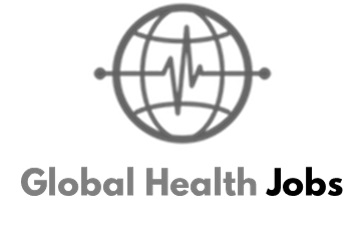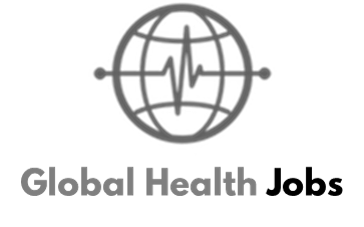International Electronics Manufacturing Consultant
Company Overview:
Palladium is a global leader in the design, development and delivery of Positive Impact – the intentional creation of enduring social and economic value. We work with foundations, investors, governments, corporations, communities and civil society to formulate strategies and implement solutions that generate lasting social, environmental and financial benefits.
For the past 50 years, we have been making Positive Impact possible. With a team of more than 2,500 employees operating in 90 plus countries and a global network of more than 35,000 technical experts, Palladium has improved – and is committed to continuing to improve – economies, societies and most importantly, people’s lives.
Palladium is a child-safe organisation, and screens applicants for suitability to work with children. We also provide equal employment to all participants and employees without regard to race, color, religion, gender, age, disability, sexual orientation, veteran or marital status.
Project Overview and Role:
Guatemala is a developing country with great economic growth potential. However, despite the Government’s efforts to enhance growth, Guatemala faces major challenges related to sustainable development. The estimated population is 14,901,286 (48.5% men and 51.5% women), with about 41.7% identifying as Indigenous and 54.69% of the population aged 24 years or younger [1]. Despite this potential, 59.3% of the population lives in poverty, earning less than Q.10,218.00 (or US$ 1,327,31) per year [2]. In addition to poverty, Guatemala faces a number of adverse realities, including high rates of social, cultural, and historical violence that divide the country among ethnic, economic, and geographic groups. Migrants cite the problem as “lack of employment opportunities, income generation, and educational opportunities. There are no technical careers for young people in Guatemala.” According to data from the Ministry of Education, 170,000 students graduate each year; however, the gross employment rate remains below 60%, evidencing the problem of labor insertion in the country.
The USAID/Creating Economic Opportunities Guatemala Project (CEO) supports economic growth, private sector development, competitiveness, and job creation in Guatemala. In addition, it aims to strengthen investment and trade promotion, catalyze productive infrastructure, develop Guatemala’s workforce, and improve the enabling business environment. A core objective of the CEO Project is to strengthen the private sector as a growth engine to reduce poverty, improve living conditions, and create sustainable economic opportunities in Guatemala for Guatemalans. By focusing on the country’s secondary cities, such as natural investment and growth platforms, cultivating partnerships among stakeholders in the public, private, and civil society sectors, as well as emphasizing an ecosystem conducive to innovation and entrepreneurship, the CEO Project will play a key role in job creation and will facilitate investment and enabling prosperity beyond the rural areas of the country.
Promotion for attracting foreign direct investment is a strategy that Guatemala is driving to generate employment and boost the economy. The CEO project was invited to support the “Guatemala does not stop” initiative, promoted by the Government of Guatemala and the Private Sector, to attract foreign investment in productive sectors that show potential. Specifically, the Project will support attracting investment in the Electronic Manufacturing Services (EMS) sector. With the support of the Trade and Investment Promotion Component (C1), this will serve potential investors interested in the country of Guatemala.
As a sector that is not yet developed in Guatemala, it is necessary to collect data on industry operations across different countries to determine which subsectors will yield the highest opportunities for Guatemala to join the Global Value Chain (GTS), and build a value proposition to promote the country as an investment destination for electronics manufacturing.
Primary Duties and Responsibilities:
To research the electronics manufacturers industry and structure of the GTS in order to identify Guatemala’s potential as a supplier.
Analyze and select the subsectors/products and countries with the greatest market share in international trade (import and export), in the world, Latin America, Central America, and the Caribbean.
Analyze the GTS of the selected subsectors and products to determine in what phases and/or components Guatemala has the opportunity to participate.
Describe competitiveness factors of electronics manufactures in subsectors that Guatemala could participate in, based on a comparative analysis (benchmark) of countries that have successfully developed this sector in global and Latin American markets.
Describe the competencies that human talent must have, international certifications, and recruitment models that the EMS Industry uses to contract phases, components, and services rendering of the manufacturing process.
Results of Consultancy:
Information on the subsectors, products, and countries with the greatest market share in the EMS industry in which Guatemala has the opportunity to participate, as well as the description of the Global Value Chains (GVCs) to determine in which links for the country to integrate into the manufacturing processes. This includes information on main companies participating in the GVC in the subsectors and products that represent the best opportunities for Guatemala.
Information on the main factors that make a country competitive in the selected EMS subsectors and products that represent an opportunity for Guatemala, including the characteristics of human talent, the main certifications for operation and access to international markets, and the description of the recruitment models that the industry uses for the components manufacturing and final product assembly.
Subsectors/products analysis and global value chains:
Analyze subsectors and products with a greater share in international trade, exports, and imports over the past 5 years, in the global, Latin American and Central American-Caribbean context. Include an analysis of the largest investments made in the sector and subsectors in Latin America over the last 5 years.
Determine which subsectors and products offer the highest potential for Guatemala to pursue in the global value chain , based on current market share and closeness due to economic complexity .
Describe the value chains of the subsectors and products that are determined to hold potential for Guatemala, including the main countries and companies that participate in them. For this activity, interviews shall be conducted with companies that manufacture and/or render services in the GVC phases. Include illustrative value chain schemes.
Determine in what phases, components, products, and/or services of these value chains Guatemala can participate.
Prepare a listing with information on the main manufacturing companies in the subsectors and products of interest, including final product assembly and component manufacturing companies .
Competitiveness factors:
Describe the competitiveness factors of the EMS sector with emphasis on the subsectors and products that are determined to hold potential for Guatemala.
Carry out a comparative analysis (benchmark) of the competitiveness factors of the sector in countries with a greater market share, in the world (first 2) and Latin America (Mexico, Costa Rica, and Brazil) in manufacturing in the subsectors and products that are determined to hold potential for the country.
In the analysis of competitiveness factors, expand on topics on human talent, infrastructure, special economic zones, and incentives to the sector, considering what the sector demands on these topics and what products or services do the manufacturing countries offer. For this activity, conduct interviews with companies in the sector.
Suggest what relevant items Guatemala shall consider building a value proposition that promotes the country as an investment destination in the EMS sector, including topics on human talent, infrastructure, regulatory framework, and incentives, other that are relevant in the sector.
In countries considered in the benchmarking, include information on the existence of EMS ecosystems and list the actors that are part of them, for example: businesses, public, academic associations supporting the sector (trade associations, business chambers, research and development institutes of the sector, among others).
Human talent, certifications and recruitment models:
Define the human talent profiles requested by the EMS sector, academic training, and required competencies, in the GVC phases and in technical and operational areas. Include information from estimates of the number of human talent employed/required by the companies in the sector.
Identify the certifications required in the electronic equipment manufacture, considering the operational and access stages to international markets. Identify and describe the certifications requested in the main markets of the selected subsectors/products with manufacturing potential in Guatemala.
Description of the main models that the EMS industry uses to recruit phases, components, and service rendering of the manufacturing process.
During the consultancy process, constant communication will be kept with the CEO Project’s Trade and Investment Promotion team to discuss progress and receive feedback, ensuring the achievement of the proposed objectives. The consultancy will be lead in Spanish and all the deliverables are expected to be written in Spanish, native language in Guatemala. This will include presentations of the methodology, progress, and main findings of the consultancy, and will be made to the technical and management team of the Project.
Deliverables (in Spanish):
Work Plan (2 days):
A descriptive document of the proposed work plan with which the consultant will achieve the objectives in the required time (include activities by topic in accordance with the TDR’s). It includes methodological description (of each phase/activity/instruments)
Schedule of activities: considering progress and focus meetings and deliverables for technical review (3 days before administrative delivery)
Prior to the approval of the work plan, the methodology and proposed sources of information will be submitted to the Trade and Investment Promotion team (C1). The delivery will be 5 working days after the contract is signed.
Analysis of EMS subsectors and their global value chain (24 days):
Technical report containing:
Editable document (word) with all the information of the activities contained in clause a. including tables, diagrams, charts, etc. and a detailed description of the methodology used for the analysis.
Additional attached files such as analysis databases (Excel), editable charts and schemes, instrument formats used; i. e., interview guides and reports, etc.
PowerPoint presentation with relevant information and key findings
Competitiveness and Benchmarking Analysis (24 days):
Technical report containing:
Editable document (word) with all the information on the activities contained in clause b. including tables, schemes, analysis databases (Excel).
Additional attachments such as analysis databases (Excel), editable graphs and schemes, etc.
PowerPoint presentation with relevant information and key findings.
Human talent, certifications, and recruitment models (10 days):
Technical report containing:
Editable document (word) with all the information of the activities contained in clause c. including tables, schemas, analysis databases (Excel), links to certifications web pages, etc.
Additional attachments such as analysis databases (Excel), editable charts and schemes, etc.
PowerPoint presentation with relevant information and key findings.
Level of Effort and Period:
The level of effort is 60 effective working days after the USAID approval. The suggested execution period is June to October 2021 (60 days in 5 months of the contract).
Follow-up and Approval:
Evelyn Córdova, investment advisor for the Trade and Investment Promotion component, with the approval of the Component Lead, Gabriela García.
Qualifications:
Academic training
Degree and postgraduate studies in economics, international trade, or related careers
Knowledge of global manufacturing processes and value chains
Professional experience
Experience in international trade analysis (exports and imports)
Experience in market research, benchmarking, or other linked to the electronics manufacture sector at the international level
Work experience and knowledge om the global chain value of the electronics manufacture sector
Experience in managing data analysis and management tools such as: Excel, OEC (Economic Complexity), TradeMap, and/or similar
Additional knowledge
Knowledge of the electronic sector in the global and Latin American context
Management of international trade data analysis tools and global value chains
Required Competencies/Skills
Ability to relate to international private sector actors for information management
Results-oriented.
Effective time management.
Capacity for analysis and drafting of technical reports
Apply now
Share
Save Job
More Information
- £ Salary Offer POA
- $ Salary Offer POA
- Experience Levels Senior
- Total Years of Experience 0-5




